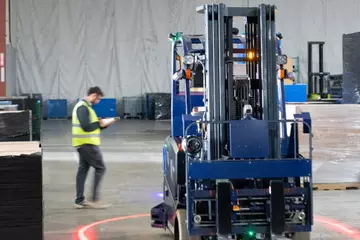The ELD mandate: where are we now?
According to an American Transportation Research Industry (ATRI) report, 2020 was the first year since 2012 that the ELD mandate has not been included in the Top Industry Issue Rankings. While that may be the case, related issues that affect shippers, like detention/delay and hours-of-service (HOS), remain top concerns. Learn more about the impact the ELD mandate has had on the industry, from implementation until now, and see some simple practices you can use to help ensure drivers spend more time on the road than waiting at the dock — so you can avoid unnecessary fees and get more consistent on-time deliveries.
What is the ELD Mandate?
The ELD Mandate is a U.S. federal government regulation that requires certain drivers operating commercial vehicles to record their HOS with an electronic logging device (ELD) rather than in a paper logbook. The mandate was designed to create a safer working environment for drivers by helping ensure they get the breaks and rest they need, which should result in fewer fatigued drivers and increased safety on the roadways. The mandate became a law February 16, 2016 and went into the full compliance phase December 16, 2019.
While improved HOS compliance and safety were the primary goals of the ELD mandate, it has also proven beneficial for both shippers and carriers when leveraged well. Real-time data transmitted from truck cabs can be used to drive improvements and create operational efficiencies across the board. Carriers can use the insights from ELD data to make improvements in truck and driver utilization and to help shippers optimize load planning and scheduling for a more efficient supply chain. It can also help reduce operational expenses by bringing to light issues that can add costs to the bottom line, such as reducing idle time and fuel usage. All this information enables a more transparent supply chain to help shippers make better logistics decisions.
The impact so far
According to this infographic from the FMCSA, HOS compliance has improved since the mandate was fully implemented, with violations dropping significantly. But, as far as its impact on highway safety, there’s some uncertainty in 2020 partially due to the unforeseen circumstances caused by COVID-19. The National Highway Traffic Safety Administration (NHTSA) released a preliminary preview report and a special report in October 2020 that showed traffic and behavioral patterns resulting from the public health emergency created unique, unprecedented conditions on the nation’s highways. The country saw a sharp reduction in Vehicles Miles Traveled (VMT), resulting in less accidents, however fatalities were higher — including those where large trucks were involved. The report mentioned several contributors to this, one being increased speeds resulting from fewer vehicles on the road. The change in traffic patterns combined with emergency HOS exemptions have made it difficult to determine if the mandate is affecting safety.
What shippers can do to help keep their freight moving (and drivers not waiting at the dock)
As a shipper, it’s likely one of your biggest concerns is making sure drivers have enough hours left in their day or week to deliver when and where you need it. Because the ELD mandate requires that drivers be on the clock while they’re waiting to be loaded and unloaded, long delays during pickups and deliveries can cut into driving time, resulting in HOS issues that can impact transit times and sometimes even add costly detention charges. Here are some things you can do as a shipper to help mitigate that risk.
- Provide accurate information. Make sure shipping documents have accurate contact information and directions to your facility, detailed instructions and a concise pickup or delivery window.
- Implement dock appointment scheduling. Web-based appointment scheduling can enable shippers, carriers and consignees to schedule appointments online to help improve loading and unloading efficiency and reduce the number of trucks waiting at the dock at the same time. If this technology isn’t available, stagger pickup requests and delivery appointments.
- Stage freight and have the paperwork ready. When the driver arrives, have the goods packaged properly and waiting on the dock, have paperwork ready and have a crew ready to help load and unload if needed.
Ship with ArcBest®
Because we understand the value of ELDs for both safety and collecting data that helps inform a more transparent supply chain for our customers, ArcBest® carrier ABF Freight® made the switch to ELDs in 2016, retrofitting all existing tractors. Since then, all new tractors have been equipped with the technology. Our Panther Premium Logistics® fleet has been 100% ELD compliant for several years as well. That means it’s business as usual for ArcBest. Learn more about the integrated logistics solutions available through ArcBest and how we can help optimize your supply chain and keep your shipments moving.







